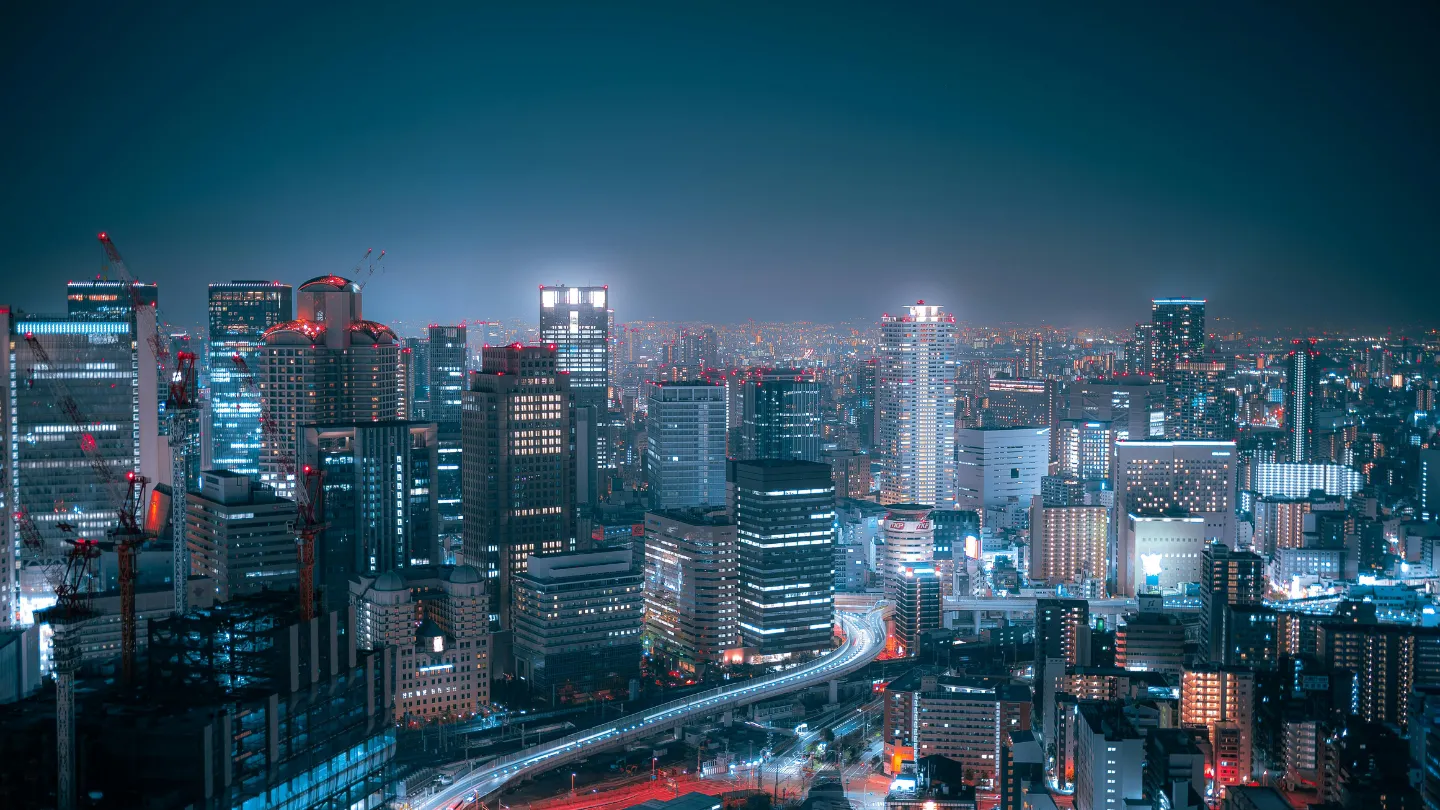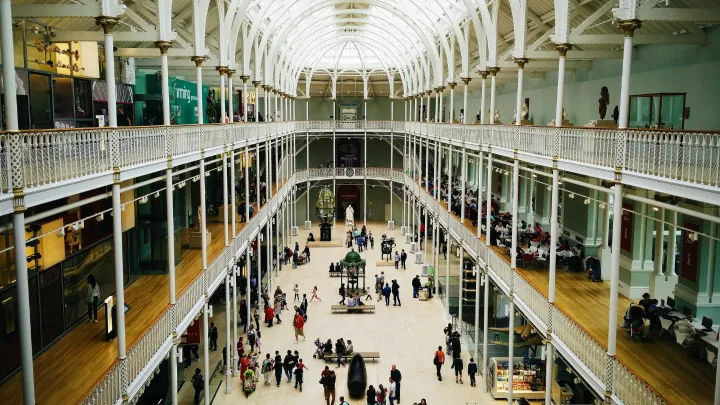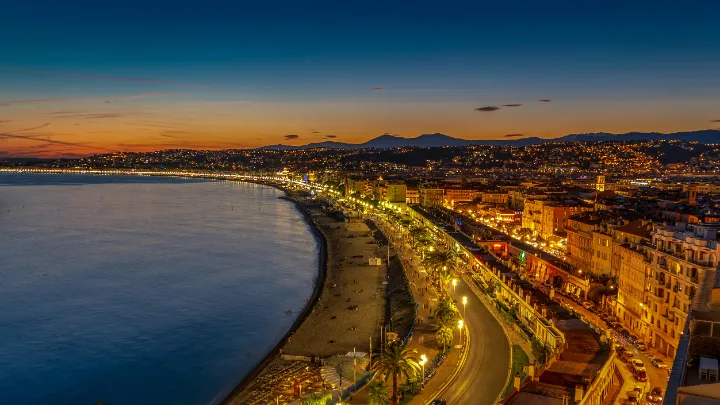The Peace Destinations
Nov 14 • 6 min read
Osaka is a city shaped by energy, food culture, and centuries of commerce. Unlike Tokyo’s vertical pace or Kyoto’s quiet elegance, Osaka Japan blends modern neighbourhood life with a warm, informal spirit that locals call kuidaore—the idea of enjoying good food without restraint. Visitors feel this character immediately, whether they drift along the neon corridors of Dotonbori, walk into the calm shade of Shitenno-ji Temple, or approach the wide lawns surrounding Osaka Castle.
This is a city divided by mood and texture. You can start the morning inside a peaceful Japanese garden in Osaka Castle Park, step into a retro arcade in Nipponbashi by midday, and finish the evening wandering the lantern-lit streets of Shinsekai. Every area has a purpose, whether it’s culinary exploration, traditional heritage, neighbourhood crafts, historic shrines, or panoramic viewpoints. For travellers who want a grounded, immersive experience, Osaka offers a mosaic of scenes that connect naturally from one district to the next.
Best Time to Visit Osaka
Spring and autumn are the most comfortable times to explore Osaka. From late March to early April, cherry blossoms brighten the moat around Osaka Castle and soften the atmosphere of Tennoji Park. October and November bring clear skies, crisp air, and rich autumn colours in places like Expo ’70 Commemorative Park. Summer is lively but humid, while winter is mild and excellent for food markets and indoor attractions. The city’s festivals—such as Tenjin Matsuri in summer and Kishiwada Danjiri Matsuri in early autumn—offer a deeper look into Osaka’s cultural heritage.
Read more:
Exploring Osaka: A Deep Dive into the City’s Neighbourhoods and Experiences
Dotonbori and Namba: The Heart of Osaka’s Urban Energy
Dotonbori is the city’s most iconic waterside district, known for its luminous signage, busy restaurants, and bridges that frame nightly reflections on the canal. The Glico Sign dominates the view from Ebisubashi Bridge, where locals and travellers pause to take in the spectacle. Wander a few steps away and the atmosphere shifts into narrower lanes near Hozen-ji Temple, where visitors press wet ladles onto the moss-covered statue in a quiet moment of reflection.
Just south, Namba offers another layer of discovery. The area includes Shinsaibashi and the long Shinsaibashi-Suji Shopping Street, where everything from small boutiques to long-established stores create a sense of constant movement. For those interested in culinary tools or traditional food craft, Sennichimae Doguyasuji Shopping Street is a fascinating aisle filled with knives, ceramics, and restaurant equipment.
Nipponbashi and Den Den Town: Retro Gaming and Subculture
Nipponbashi, often compared to Tokyo’s Akihabara, is the heart of Osaka’s electronics and anime culture. Den Den Town stretches across several blocks, offering figure shops, vintage collectibles, and second-hand electronics. Retro gaming enthusiasts often head directly to Super Potato Retrokan, which carries consoles and games that shaped Japan’s entertainment history. This district has a warm, local feel, and small cafés, arcades, and hobby shops help build an atmosphere that encourages slow exploration.
Osaka Castle: History Surrounded by Nature
Osaka Castle stands as one of the city’s most recognisable landmarks, set within the expansive green space of Osaka Castle Park. The main tower rises above a stone foundation and overlooks a wide moat that creates a peaceful buffer from the modern skyline. Inside, visitors can learn about Osaka’s political history, battles, and architectural evolution. Outside, the Japanese Garden Osaka Castle offers winding paths, stone lanterns, and reflective ponds that provide a calmer pace compared to the busy districts nearby.
Osaka Aquarium Kaiyukan and Tempozan
The Osaka Aquarium Kaiyukan is among the country’s most impressive marine museums, positioned near the Tempozan area along Osaka Bay. Its large central tank showcases marine life from the Pacific Rim, including rays, tropical fish, and a whale shark. The surrounding Tempozan Harbour Village is peaceful despite its popularity, offering views of the water, a ferris wheel, and walkways that feel refreshing after time in the dense urban core.
Shinsekai and Tennoji: Street Culture, Gardens, and Historic Temples
Shinsekai is a district shaped by mid-20th-century architecture, casual eateries, and the towering Tsutenkaku Tower that defines its skyline. The area captures a nostalgic feeling, especially in the evenings when lanterns glow across shopfronts.
Nearby, Tennoji Park forms a spacious green area that links several important landmarks. Kawazokoike Pond reflects the seasonal colours, while Tennoji Zoo remains a longstanding family space. Keitakuen Garden offers a traditional Japanese landscape style with stepping stones, a central pond, and well-maintained greenery.
The district also has deep spiritual roots. Horikoshi Jinja is admired for its quiet atmosphere, while Isshin-ji Temple is known for its unique statues created from ashes of the deceased. Together, these sites create a balanced mix of heritage, nature, and everyday life.
America Mura and Youth Culture
America Mura is one of Osaka’s most expressive neighbourhoods. Known for its independent fashion shops, creative studios, and music venues, the district appeals to younger travellers and those interested in modern subculture. The squares and street corners feel relaxed, with murals and casual cafés giving the area a creative edge distinct from nearby Shinsaibashi.
Universal Studios Japan and the Osaka Bay Area
For travellers interested in cinematic experiences, Universal Studios Japan offers themed rides, character zones, and seasonal events. It’s particularly popular for families and groups, yet still accessible for solo travellers who enjoy immersive entertainment.
Beyond the park, the Osaka Bay Area includes walkways, waterfront parks, and views stretching across the harbour. Expocity, Nifrel Aquarium, and the wide lawns around Expo ’70 Commemorative Park complement the coastal activities with a mixture of museums, shopping areas, and architectural icons such as the Tower of the Sun
Sumiyoshi Taisha and the Southern Districts
Sumiyoshi Taisha is one of Japan’s oldest Shinto shrines, notable for its straight-edged architecture and the red Sorihashi Bridge arching over the pond. The surrounding Sumiyoshi Park adds a relaxed, residential feel to the district, offering a contrast to central Osaka’s busier rhythm. This area provides a clear view into the city’s spiritual traditions, seasonal festivals, and neighbourhood atmosphere.
Onsen and Relaxation in Osaka
Osaka offers a surprising number of urban onsen facilities, giving travellers easy access to natural-style bathing without leaving the city. Spa World Osaka provides an expansive collection of themed baths, while Solaniwa Onsen blends traditional design with garden views. Tennen Onsen Naniwanoyu and Kamigata Onsen Ikkyu offer quieter experiences, each with mineral-rich waters and local clientele that give an authentic impression of everyday wellness culture.
Day Trips from Osaka
While this guide focuses on Osaka itself, the city naturally links to nearby historical centres. Many travellers pair their stay with visits to Kobe, Himeji, Wakayama, Koyasan, Tondabayashi, or Sakai Osaka. Each destination has its own history, whether castle towns, coastal shrines, temple complexes, or traditional merchant districts. They’re close enough to keep Osaka as your main base while exploring the wider Kansai region,
Where to Stay
Osaka’s districts offer different experiences depending on the atmosphere you prefer. Umeda suits travellers who want easy access to transport, shopping centres, and views from the Umeda Sky Building. Namba and Shinsaibashi are ideal for food-focused visitors who enjoy staying within walking distance of Dotonbori, Hozen-ji Temple, and lively shopping streets. Tennoji offers a balance of gardens, temples, and modern architecture, with quick access to Abeno Harukas and the HARUKAS 300 Observatory. For those seeking a quieter experience, the Osaka Bay Area near Tempozan provides calmer nights and easy access to the aquarium and waterfront paths. Budget hostels, mid-range hotels, and luxury towers are widely available, so travellers can choose according to location rather than cost.
Tips or Practical Advice
- Carry a transit card for convenient movement across trains and metros.
- Book Universal Studios Japan tickets in advance during weekends or holidays.
- Visit Dotonbori and Shinsekai earlier in the evening for easier photography.
- Respect temple etiquette—remove shoes when required and stay mindful of quiet areas.
- Try street food in small servings to experience more variety across Namba and Shinsekai.
- Combine indoor attractions with outdoor walks through parks to balance the city’s pace.
FAQs
Q1. Is Osaka Japan good for first-time visitors?
Yes, the city is easy to navigate and offers a balanced mix of food, culture, and modern districts.
Q2. What area is best to stay in Osaka?
Namba and Shinsaibashi are ideal for food and nightlife, while Umeda suits those prioritising transport and city views.
Q3. Is Osaka Castle worth visiting?
Yes. The main tower, moat, museum areas, and Japanese Garden Osaka Castle make it a meaningful cultural stop.
Q4. Are there traditional temples in Osaka?
Shitenno-ji Temple, Isshin-ji Temple, Horikoshi Jinja, and Sumiyoshi Taisha offer historic insight into the city’s spiritual roots.
Q5. What is the most iconic place in Osaka?
Dotonbori, especially the Glico Sign and Ebisubashi Bridge, remains the city’s most recognisable location.
Q6. Is Osaka good for shopping?
Yes. Shinsaibashi-Suji Shopping Street, Namba districts, and Den Den Town are particularly popular.
Q7. What are the best nature spots near Osaka?
Minoh Falls and the grounds of Expo ’70 Commemorative Park provide excellent day escapes.
Conclusion
Osaka blends cultural heritage, food traditions, and lively district life into an experience that feels both dynamic and grounded. From the buzzing lights of Dotonbori to the quiet ponds of Tennoji Park, the city allows travellers to explore at their own pace, discovering temples, gardens, market lanes, and waterfront areas as they go. Whether you’re visiting for the cuisine, the atmosphere, or the neighbourhood character, Osaka offers a depth that reveals more with each walk. For further inspiration and destination insights, you can explore similar guides on The Peace Destinations website.




